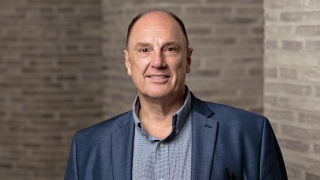2021–22 Annual Report: Table of Contents and Director's Foreword
1. From the Director: Highlights of the Year
Highlights of the Year: "A Triumphant Return"
2. Campus and Community Programs
Campus Engagement: Curricular and Co-Curricular
Curricular engagement
Co-curricular engagement
Intern engagement
Public Programs: Highlights
Public, campus, and community programs
Programs for schools
3. Exhibitions
Exhibitions 2021–22
A Space for Dialogue
4. Collections
Acquisitions: July 1, 2021–June 30, 2022
Outgoing loans
Deaccessioned objects
Objects conserved
5. External Relations / Operations
Publications
Audience-facing digital tools and content
Social media
Public relations
Visitor services
Security/buildings
6. Digital Platforms, Media, and Archives
Digitization of collection
7. Development
Director's Circle members
Donors of works of art
Gifts for acquisitions, endowments, education, and other purposes
8. Our Team
Staff, Board of Advisors, and Docents
Interns
Museum Club
9. By the Numbers
Attendance:
Museum gallery attendance
Dartmouth student attendance
Children and youth attendance
Adult attendance
Program attendance
Online Engagement:
Museum website visits
Facebook
Instagram
Twitter
LinkedIn
The Collection:
Works in the collection
Works receiving conservation
Loans to other institutions
New acquisitions
Objects digitized
Academic Use of the Galleries and Bernstein Center for Object Study:
Number of class visits
Number of faculty visits
Number of student visits
Works pulled from storage for teaching
Programs:
Programs
Lectures, symposia, gallery talks, and special events
Family programs
K–12 students served in Images, Art Start, and tours
Co-curricular Dartmouth student programs
Attendance at co-curricular Dartmouth student programs
Staff:
Staff
Interns
Docents
Museum Statistics:
Galleries
Gallery Square Footage
Bernstein Center for Object Study Square Footage

LEFT Director John Stomberg guides a group of visitors, including Dartmouth President Phil Hanlon, on a tour of the exhibition "Form and Relation: Contemporary Native Ceramics." Photo by Robert Gill.

ABOVE Photo by Rob Strong.
Director's Forward: "A Triumphant Return"
It was quite a year. We reopened the museum and returned to a new kind of normal. It all seemed so tenuous at first. In July of 2021, we made plans to reopen to the public in early August. The staff readied the galleries, planned programs, and reviewed new protocols for what it means to be a public institution in a time of pandemic. It felt good, if a little worrisome. There is something deeply comforting for museum professionals when the museum is open, when people mill about the galleries, when we share ideas with community members in a wide variety of forums. But could we do it safely and would our visitors return?
By September, we were on a roll. We followed new rules for participation, and soon we had the first public responses to exhibitions that had been shuttered for over a year. They were good. We had pushed hard on notions of the traditional and the contemporary and had expected myriad reactions—we were pleasantly surprised at the mostly universal acceptance for the new combinations of art that were on view. In the spring, we launched our first sustained expansion of the American art galleries with a project titled This Land: American Engagement with the Natural World. For the exhibition, we created shared spaces for Native American and non-Native American collections, exploring fresh relationships in the world of art. It was a time of learning for us, and we will study and apply the results in future uses and displays of these collections.
Perhaps one of the happiest moments for all the museum's staff as we reopened our doors was the reinstitution of the student-curated A Space for Dialogue exhibitions in the galleries. Our many virtual iterations of these projects were, and are, amazing, but it was a joy to have the students share their efforts with our visitors in a real space. It continues to be a source of great pride that the Hood Museu of Art can provide such a substantial experience for our interns—and, let's face it, the shows are wonderful and unlike anything that seasoned curators would typically organize.
The other big news was our collections work. We focused on more deeply organizing, cataloguing, and photographing our holdings. With the opening of a digital photography studio, we can now work on these projects every day, and the progress has been gratifying. From data we have collected related to information usage, we know that the objects in our care that have an image included in their file receive much more attention than those that do not. We are nearing the point when half of our holdings have an associated photograph, and that number will continue to climb in the coming years.
Finally, FY22 saw significant staff changes as we continued to bid farewell to retirees and welcomed newcomers to the Hood team. While it is hard to lose experienced staff, it is also exciting to embrace new talent, ideas, and approaches. I am sure that FY22 will be seen as a transitional year for the Hood Museum. We emerged from the pandemic with fresh starts in collections, exhibitions, programs, personnel, and "back-of-house" functionality. The museum continues to reinvent itself when the time seems right—and last year, the world was ripe for change and the Hood Museum of Art was right there in the mix.
John R. Stomberg
The Virginia Rice Kelsey 1961s Director

LEFT From left to right: John R. Stomberg, Virginia Rice Kelsey 1961s Director; Beatriz Yanes Martinez, Mutual Learning Fellow; Nichelle Gaumont, Mutual Learning Fellow; and Jayde Xu, Mutual Learning Fellow, in the Russo Atrium. Photo by Lars Blackmore.
